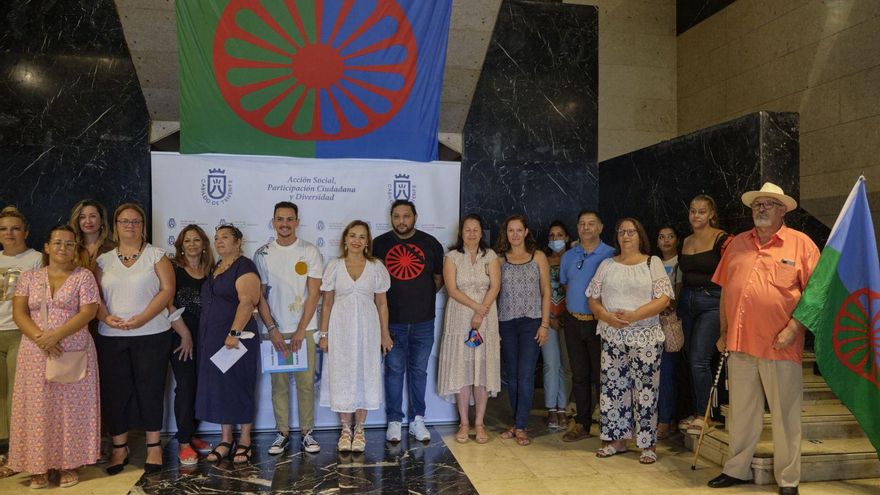
The council honors the gypsy people for the second time this year. Last spring he did it on the occasion of his International Day (April 8) and now commemorates the genocide they suffered in World War IIthe Samudaripen in Romani (2 August). In both cases, an agreement of the plenary session of March 2021 is fulfilled and the anniversary is used to pay tribute to the community on the Island.
The island’s CEO for Citizen Participation and Diversity, Nauzet Gugliotta, recalls that this day “It means paying tribute to the thousands of fatalities and also highlights the struggle of the entire group that resides in Tenerife”. This genocide was not recognized until 1982. It involved the extermination of between 25 and 50% of the European Roma population. The official figures speak of around 220,000 fatalities, but other calculations reach a million people killed. On the night of August 2-3, 1944, thousands of gypsies (4,400 according to sources) were massacred in the Auschwitz-Birkenau concentration camp, as part of the mass extermination.
The entities that make up the Insular Table of the Gypsy People –another initiative of the insular institution– they demand during the reading of their manifesto to recover their freedom and a dignified treatment.
In addition to Gugliotta, the event is attended by the second vice president and Minister of the Presidency, Finance and Modernization, Berta Pérez, and representatives of all the political groups of the Cabildo.
“It is not a day of celebration”
Pérez summarizes: “Today is not a day of celebration, but of commemoration of what should never be repeated, the genocide of a people who, unfortunately, have been persecuted throughout the centuries.” In his speech he highlights that “we have to end discrimination in society, and especially with the Roma people because we are people and all people are equal.”
Gugliotta recalls that commemorating this day means paying tribute to the victims and “putting value on the struggle of a community that suffered in a way that can never be redeemed. He considers this reminder “a moral obligation”. Values ”very important in terms of number and activity the gypsy population on the island.”
Gugliotta highlights: «Today from Tenerife we say no to anti-Gypsyism and yes to coexistence». He recalls that “this institution has created lines of work with the Roma people that we want to continue implementing.”
On behalf of the gypsy entities, José Carmona, president of the Sociocultural Federation E Rroma Va (Gypsies. Yes), and a member of the state council of the Gypsy People, points out that “today I do not want to remember only the victims of the Nazi regime, but also those who still suffer discrimination, rejection and social persecution.” She adds: «Tenerife is the voice of the Canarian gypsy people, I hope that there is more and more political and civic awareness, and that dates like this are not forgotten so that what we suffered in the past is not repeated». Carmona alludes in his speech to another attempt at genocide, in this case in Spain. The one known as The Great Raid or also general gypsy prison, which in July 1749, under King Ferdinand VI, was secretly organized by his minister, the Marquis of Ensenada. He considers “a shame that the street in Madrid where the Supreme Court Prosecutor’s Office is located or the headquarters of the General Council of the Judiciary bears that name.” He does not forget to refer to recent racist events such as the one that occurred in Peal de Becerro (Jaén) «where innocent people were expelled with stones and fire; the worst, the complicity of the mayor».
Josefa Santiago, from the Association of Gypsy Women of Tenerife Romi Camela NakerarWhat does it mean The woman wants to talkfor her part, advocates during her part of the reading of the document for the empowerment of women and the Roma people. “We are universal history, we are the survivors of our ancestors and we hope that in the 21st century we can recover our freedom and be treated with dignity,” he explains in his speech.
In addition to reading the manifesto, the Cabildo joins the commemoration of the Samudaripen lighting up the Insular Palace with the colors of the gypsy flag: green, blue and red. The ensign already symbolically presides over the act of homage that takes place at the entrance of the main building.















